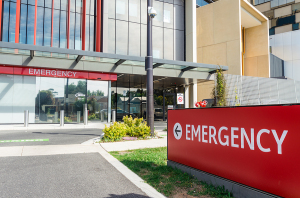by
John R. Fischer, Senior Reporter | July 20, 2020

Emergency department visits are slowly rising following the outbreak and immediate impact of the pandemic.
Visits to emergency departments were 25% below pre-COVID-19 volumes at the end of June and are slowly picking up, according to TransUnion Healthcare, a subsidiary of information and insights company, TransUnion.
Driving this rebound are patients with high-acuity medical issues, who are returning to EDs at a faster pace than those with low-acuity concerns. This pattern could potentially mark a change in medical treatment settings that could reduce healthcare costs for providers, patients and payers, according to Jonathan Wiik, principal of healthcare strategy at TransUnion Healthcare, who discusses the matter in his new book,
Healthcare Evolution: Helping Providers Get Paid in an Era of Uncertainty.
"The emergency department represents one of the most expensive and inefficient settings of care," he told HCB News. "Due to challenges with the Emergency Medical Treatment and Labor Act (EMTALA) — which requires anyone presenting at an emergency department to be stabilized regardless of their ability to pay or health insurance coverage — and consumer understanding of the best level of care, often high-cost, high-resource interventions are provided when there are other lower-cost alternative settings available. Patient education and leveraging the appropriate tools to engage patients early in navigating their healthcare coverage, cost and payments are key to managing these challenges."




Ad Statistics
Times Displayed: 45417
Times Visited: 1421 Keep biomedical devices ready to go, so care teams can be ready to care for patients. GE HealthCare’s ReadySee™ helps overcome frustrations due to lack of network and device visibility, manual troubleshooting, and downtime.
A lack of price transparency and the complexity of the current healthcare system in the U.S. leads patients to be unaware of the differences in cost associated with diverse venues of care, according to Wiik.
More patients with high-acuity conditions are returning to the ED than those with low-acuity ones.
Adults with less acute diagnoses such as cough or ear pain are returning to the ED but at a slower pace, with visit volumes for both conditions down by 82% and 40%, respectively. Higher-acuity diagnoses such as throat and chest pain have been seen more, with visits 24% below pre-COVID-19 volumes.
Researchers determined their findings by evaluating patient admitting diagnoses within ED settings from March 1 – 7 and June 14 – 20 and observed patient volume visits at more than 500 U.S. hospitals between March 1 – 7 and June 21 – 27.

